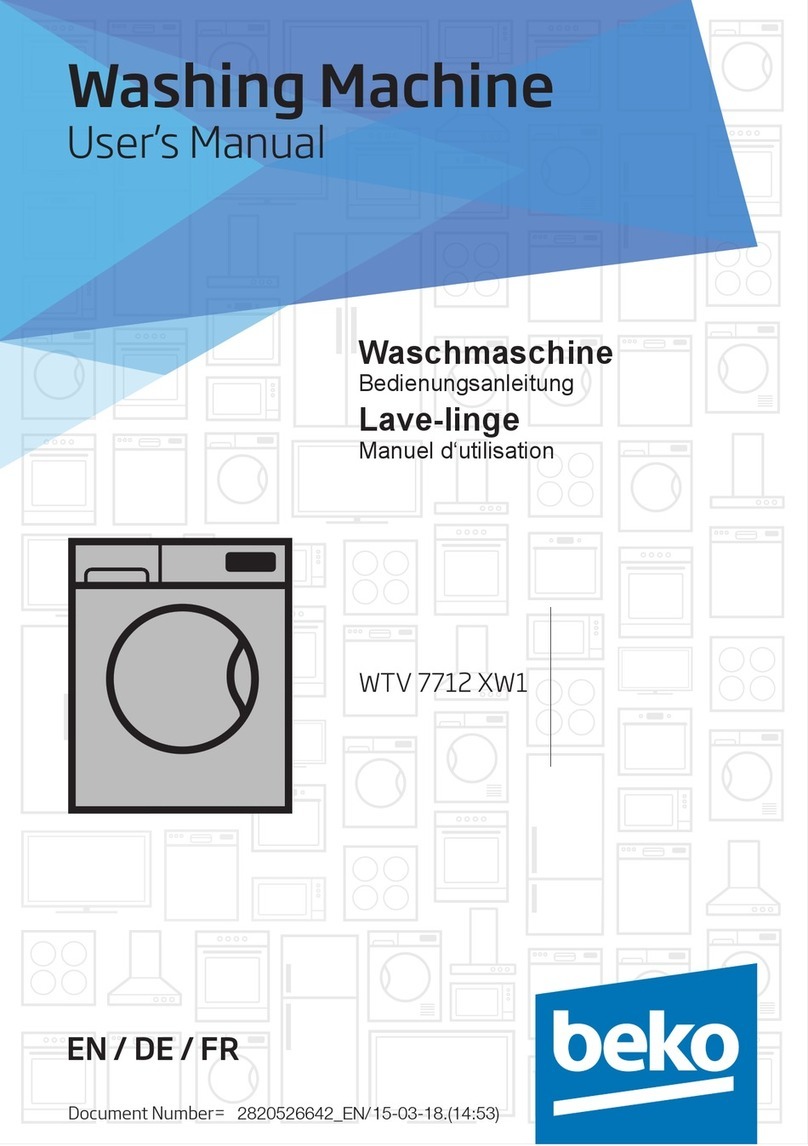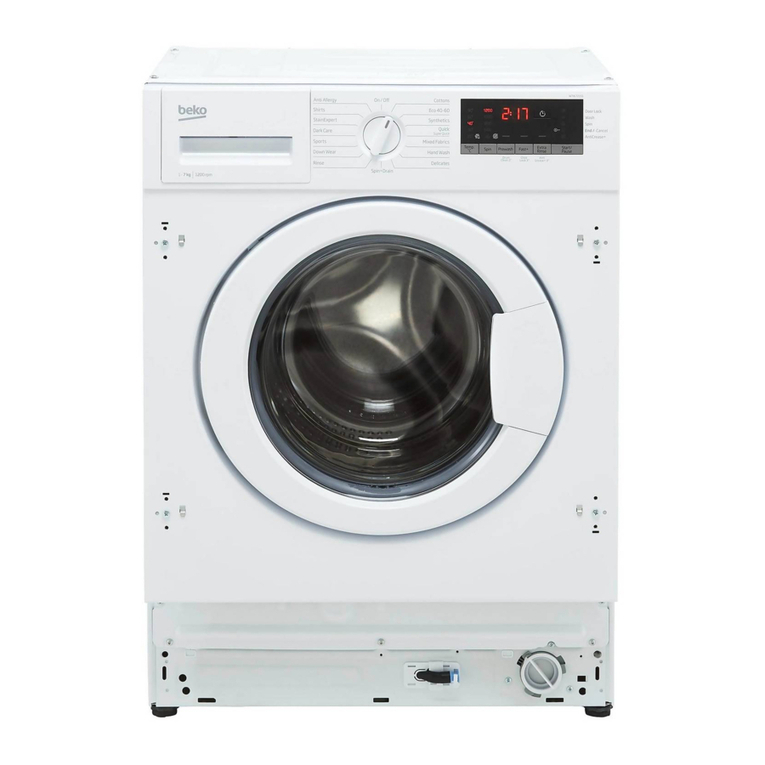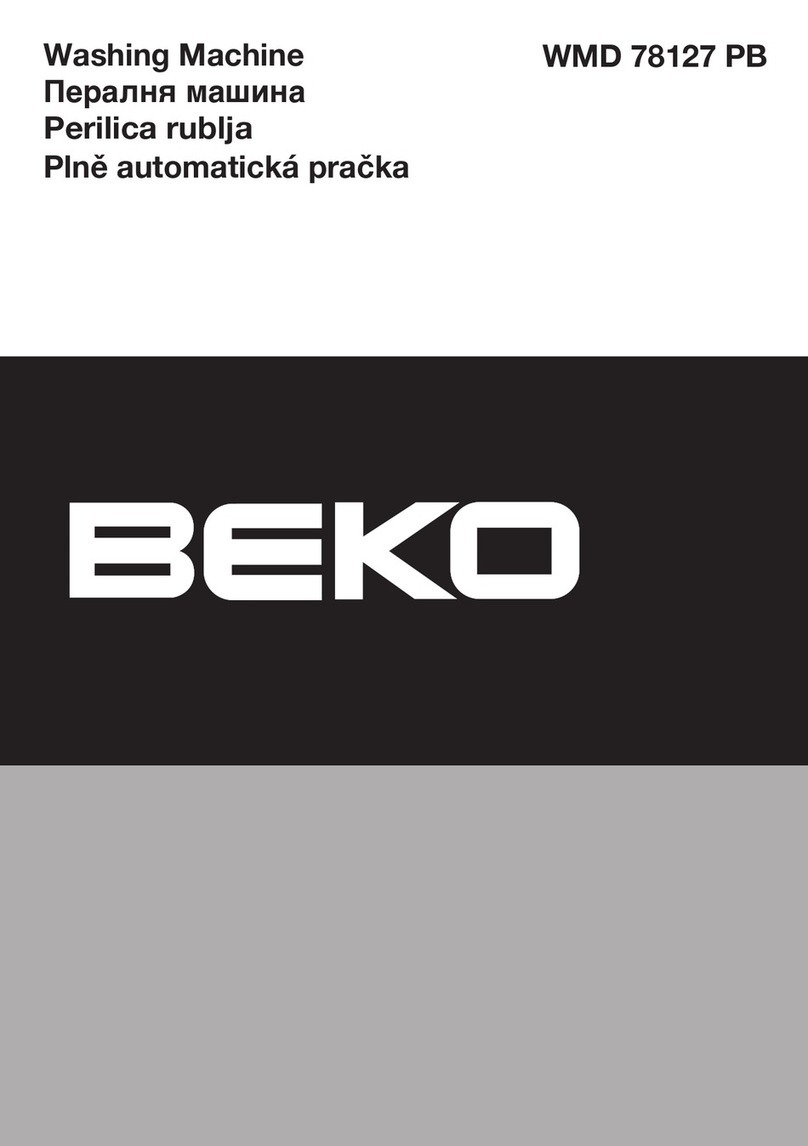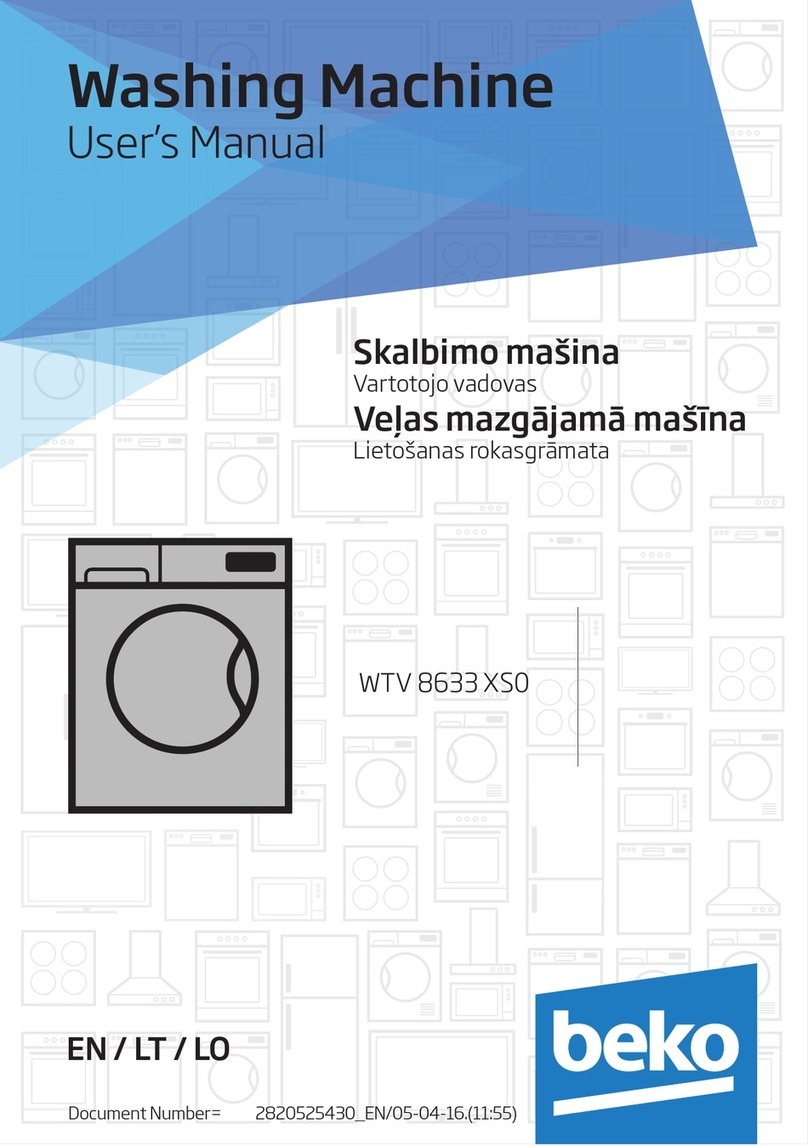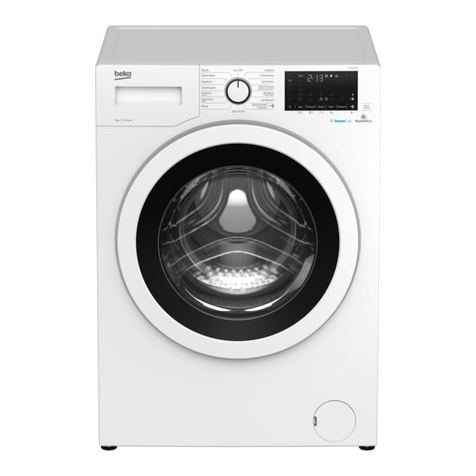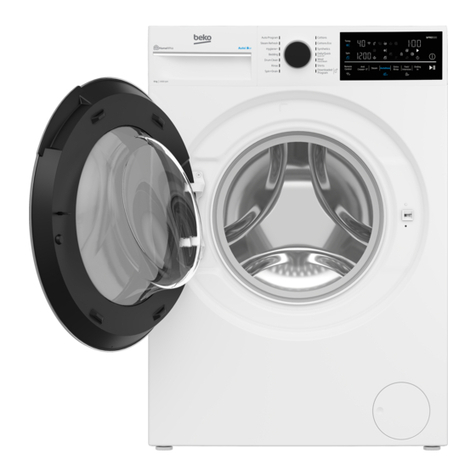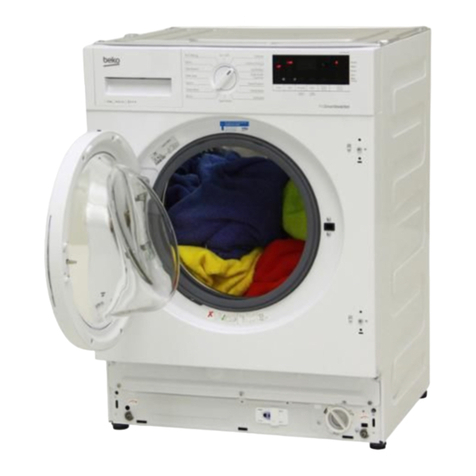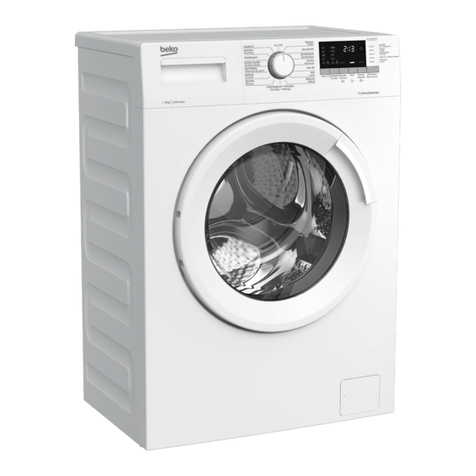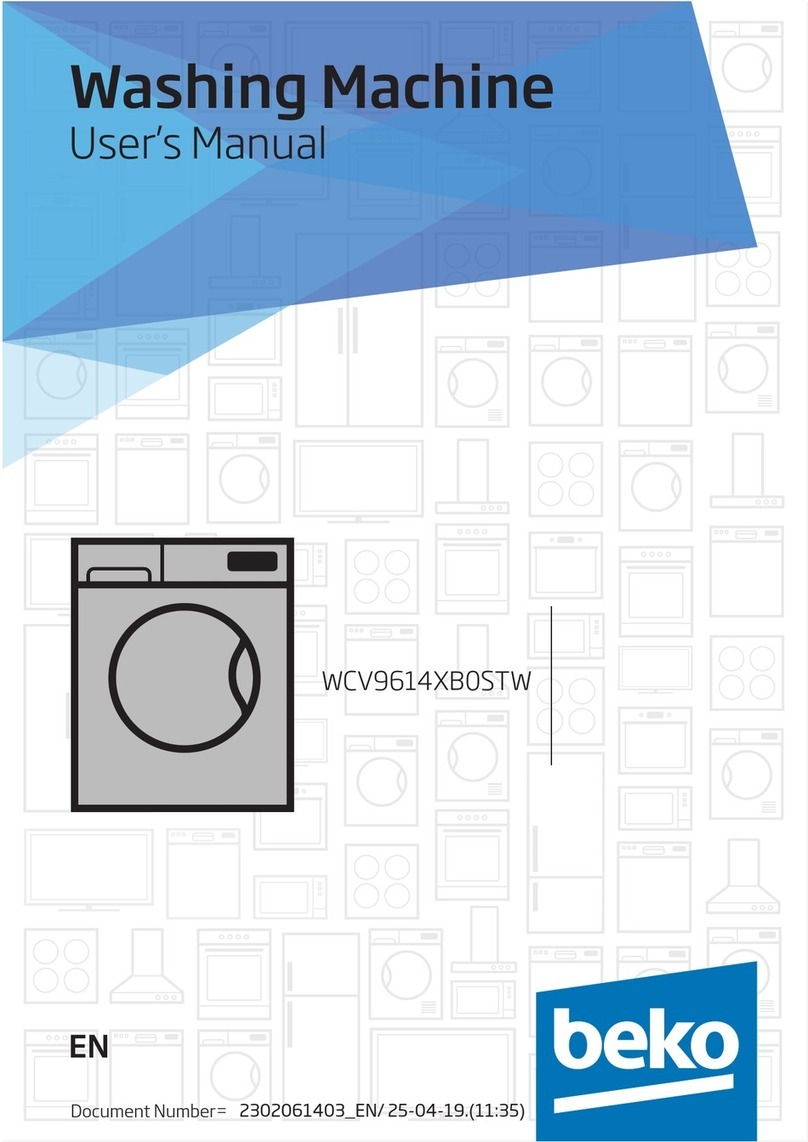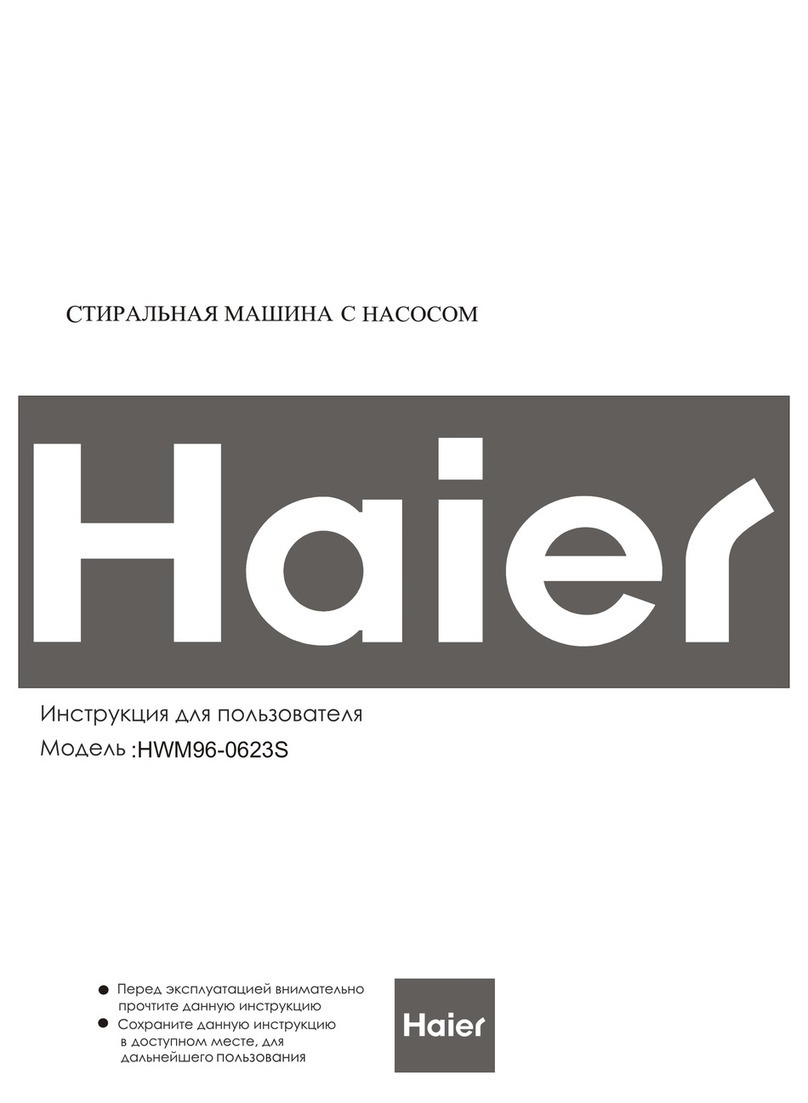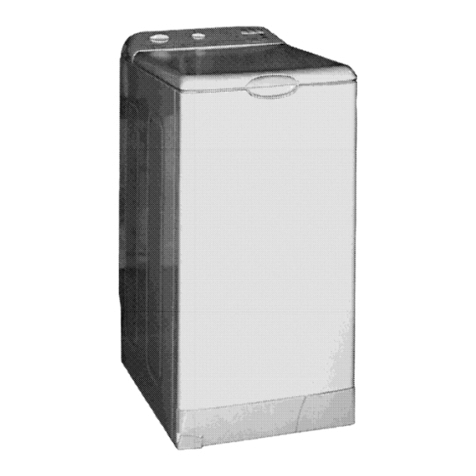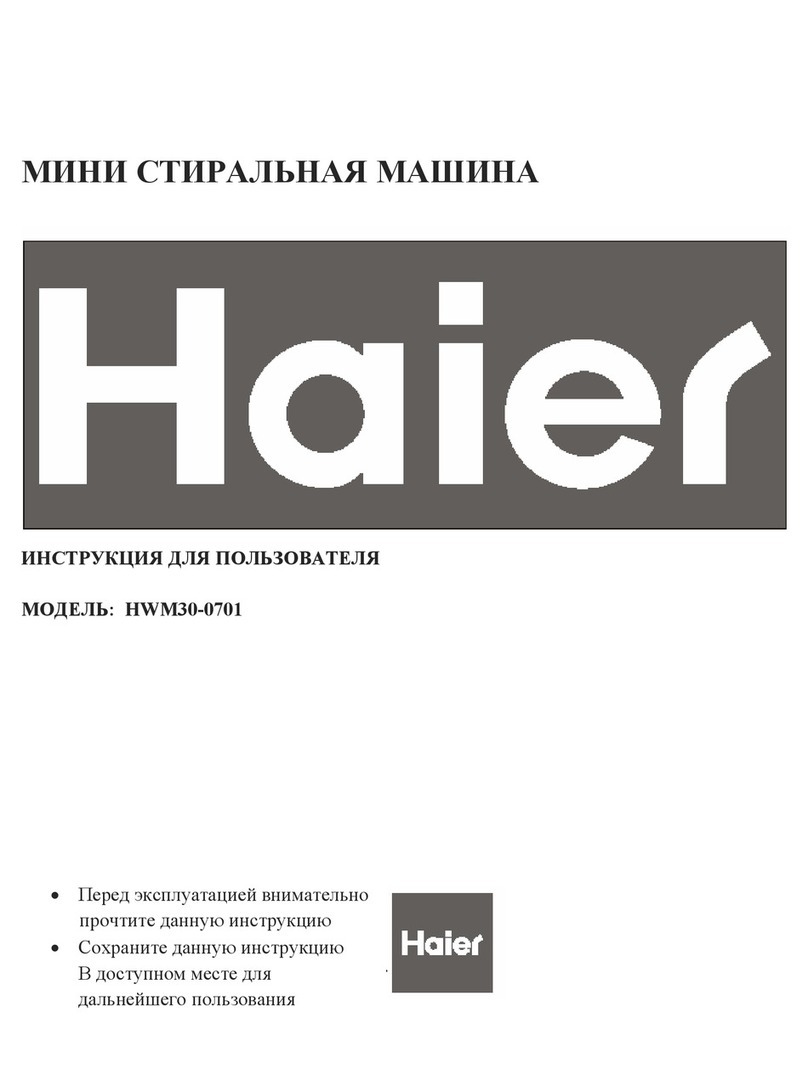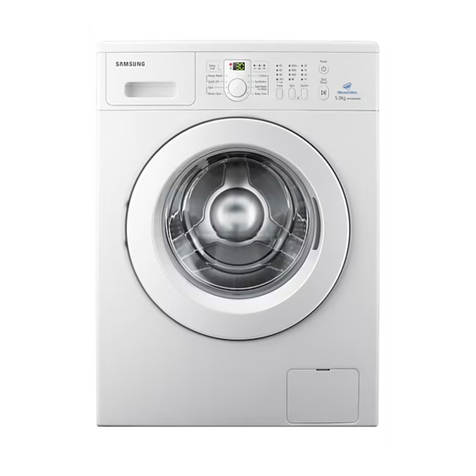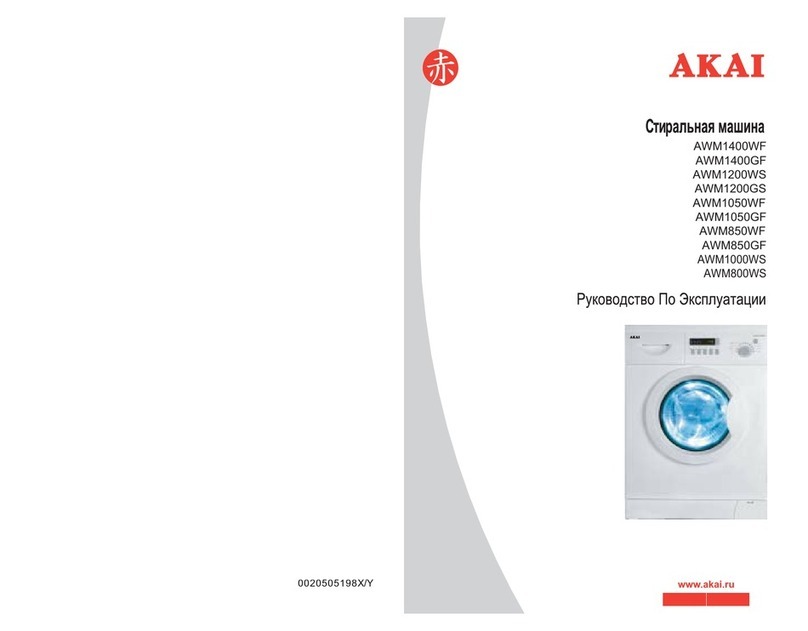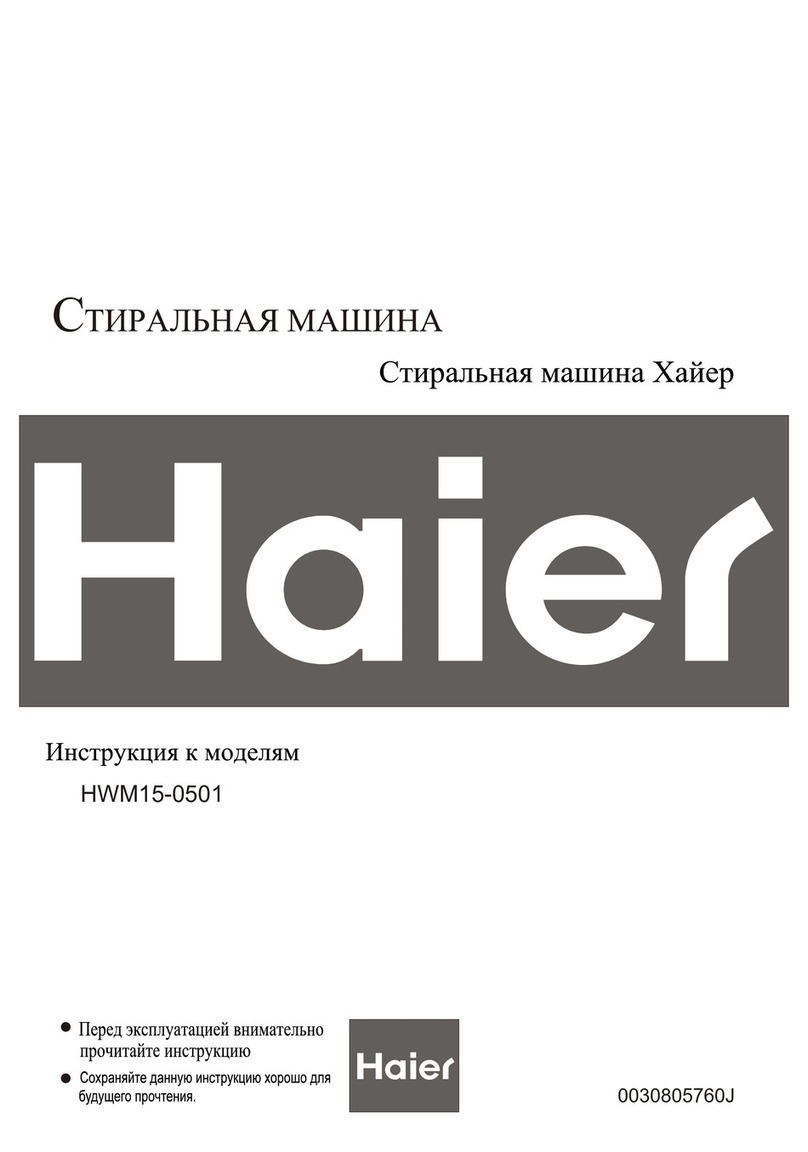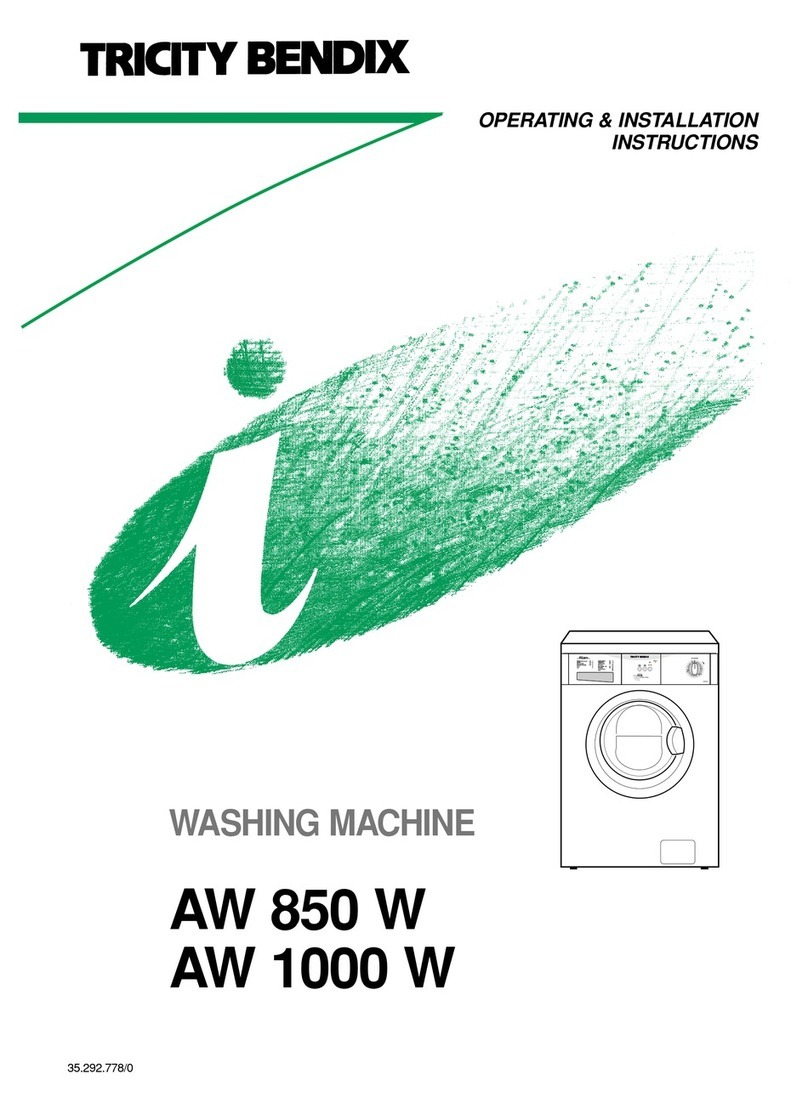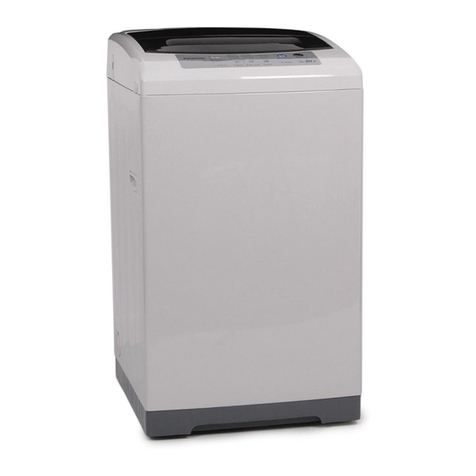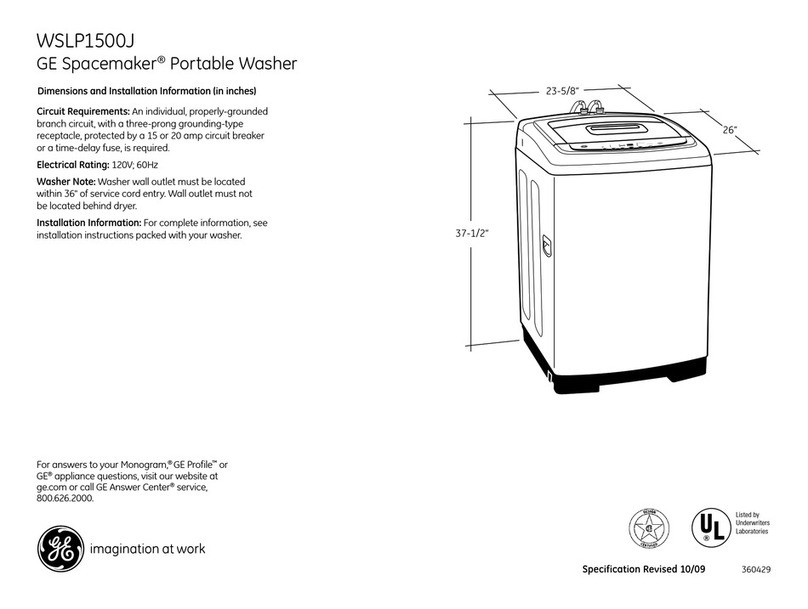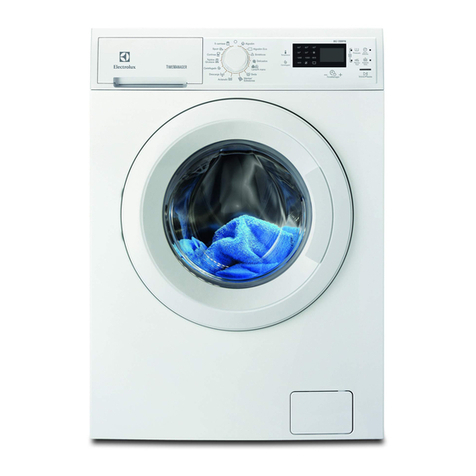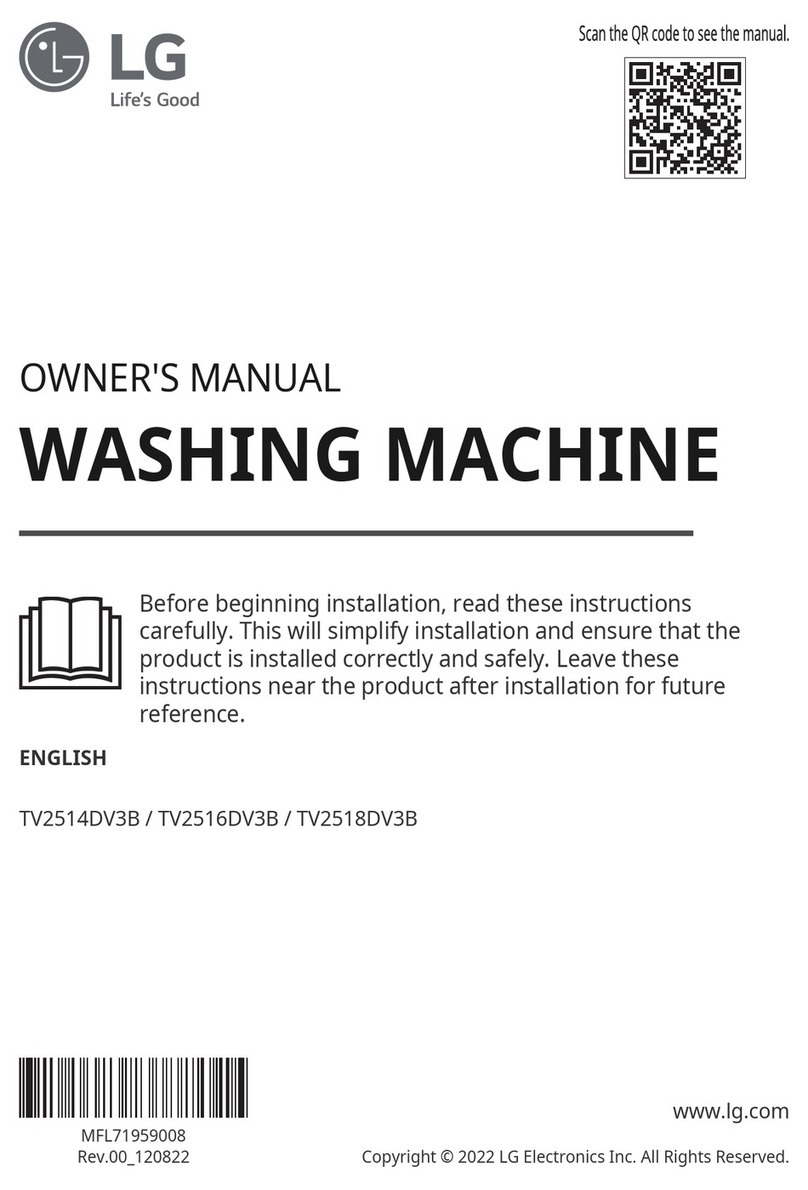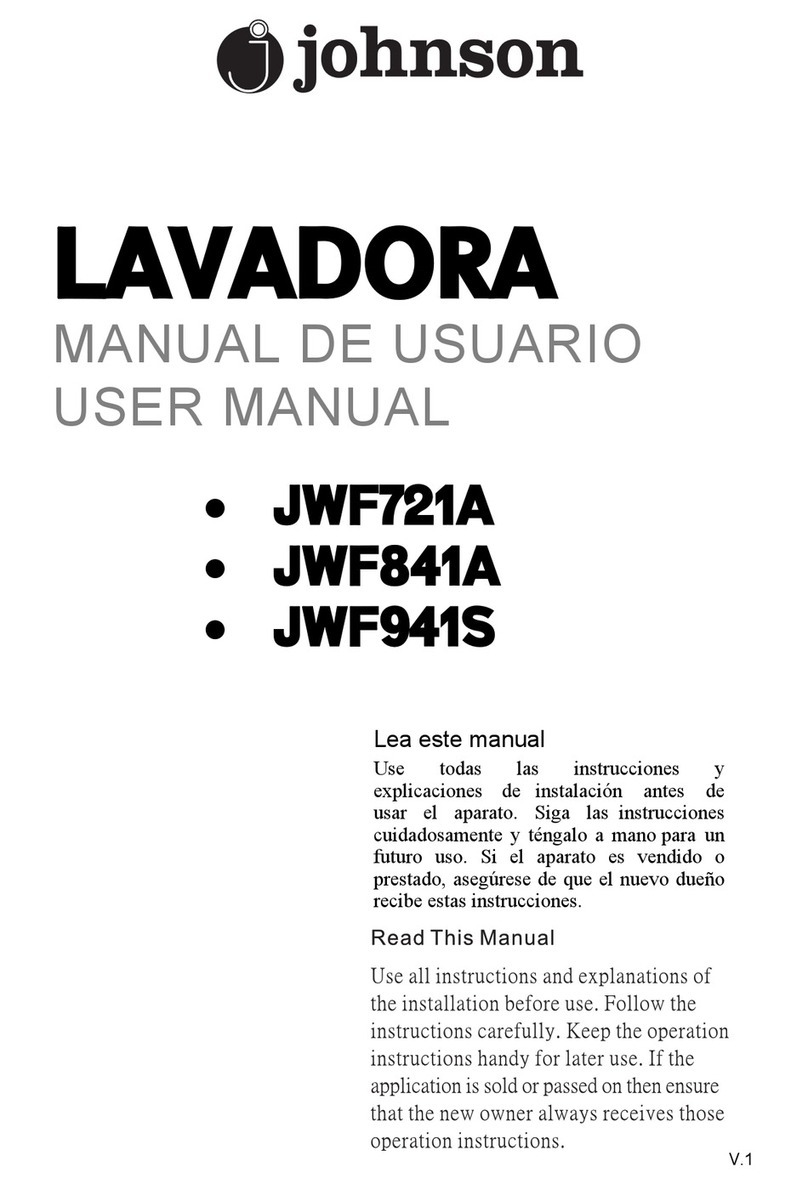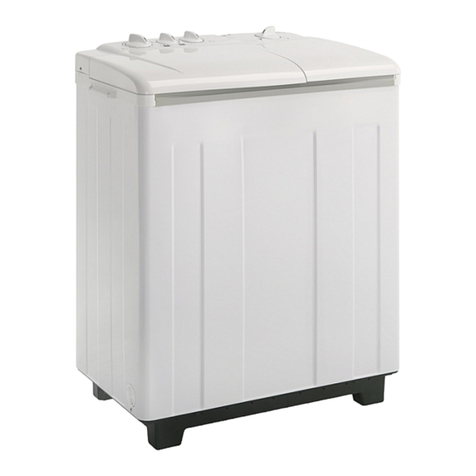
EN
6
2
Warnings
Pleasereadthefollowinginformation.
Otherwise,theremaybetheriskof
personal injury or material damage.
Moreover,anywarrantyandreliability
commitment will become void.
General Safety
• Neverplaceyourmachineonacarpet
coveredfloor.Otherwise,lackof
airflow from below your machine may
cause electrical parts to overheat.
This may cause problems with your
washing machine.
• Ifthepowercableormainsplugis
damaged you must call Authorised
Service for repair.
• Checkwaterhosesforwear.Donot
use old/used water inlet hoses. These
may cause stains on your laundry.
• Fitthedrainhoseintothewaste
water system securely to prevent any
water leakage and to allow machine
to take in and discharge water as
required. It is very important that the
water intake and drain hoses are not
folded, squeezed, or broken when the
appliance is pushed into place after it
is installed or cleaned.
• Yourwashingmachineisdesignedto
continue operating when the power
restores after a power interruption.
YoucannotcancelanyProgramme
bypressingthe“On/Offbutton.”The
machinewillresumeitsProgramme
whenthepowerrestores.Pressthe
“Start/Pause/Cancel”buttonfor3
secondstocanceltheProgramme
(See,CancellingaProgramme)
• Theremaybesomewaterinyour
machine when you receive it. This is
from the quality control process and
is normal. It is not harmful to your
machine.
• Someproblemsyoumayencounter
maybecausedbythesoftware.Press
“Start/Pause/Cancel”buttonfor3
secondstocanceltheProgramme
set in your machine before calling the
Authorised service.
First Use
• Toprepareyourmachineforwashing,
carry out your first washing process
without loading your machine and
withdetergentunder“Cottons90°C”
Programme.
• Ensurethatthecoldwater
connections has been made correctly
when installing your machine.
• Ifthecurrentfuseorcircuitbreakeris
less than 13 Amperes, please have
a qualified electrician install a 13
Ampere fuse or circuit breaker.
• Tomakeyourmachinereadyforuse,
please be sure that the tap water
supply and water drainage systems
are appropriate before calling the
Authorised service. If they are not,
call a qualified plumber to have any
necessary arrangements carried out.
Intended use
• Thisproducthasbeendesignedfor
home use.
• Theappliancemayonlybeusedfor
washing and rinsing of textiles that are
marked accordingly.
• Onlydetergents,softenersand
supplements suitable for washing
machines may be used.
• Observethecareinstructionslabelled
on textile products and any other
instructions given by companies that
produce detergents for your machine.
• Childrenshouldbesupervisedto
ensure that they do not play with the
appliance.
• Thisapplianceisnotintendedforuse
bypersons(includingchildren)with
reduced physical, sensory or mental
capabilities, or lack of experience
and knowledge, unless they have
been given supervision or instruction
concerning use of the appliance by a
person responsible for their safety.
Safety instructions
• Thisappliancemustbeconnectedto
